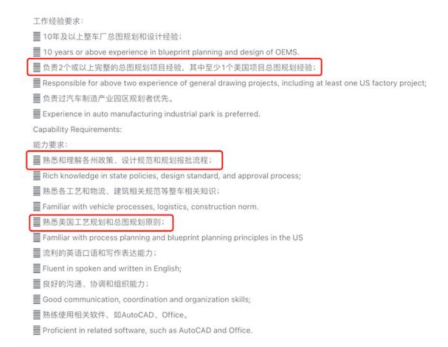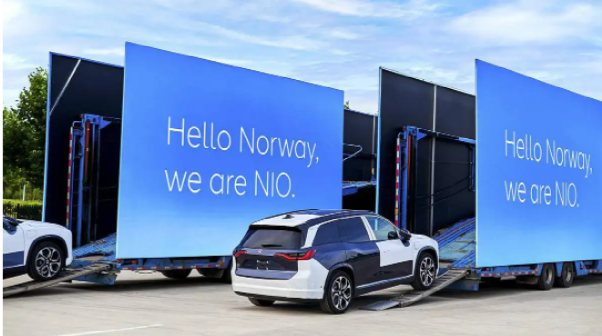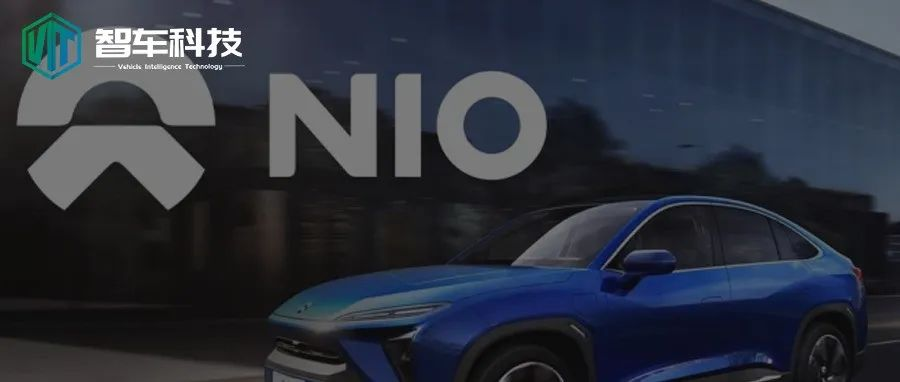Introduction
NIO building a factory in the United States has become the focus of attention these days.
According to the relevant information found online, NIO’s current job openings include experts in overseas manufacturing park planning, bodywork technology (overseas projects), overseas planning and infrastructure specialists, overseas logistics project managers, etc. These positions all require experience in having been responsible for two or more complete master plan projects, including at least one American project master plan experience; familiarity and understanding of policies, design specifications, and approval processes for master plans in various states of the United States; and knowledge of American process and master planning principles.
“United States” is the keyword for these job vacancies, and it is seen by all as a sign that NIO will be building a factory in the United States. However, when consulted by some media, NIO remained non-committal.

The Attractive U.S. Electric Vehicle Market
For NIO these days, entering the overseas market is a must in the face of increasingly fierce competition in the intelligent electric vehicle market in China. With its entry into Norway, NIO will expand its power territory in Europe in 2022, selling its electric vehicle models to multiple countries including Germany, the Netherlands, and Sweden. According to NIO’s plan, including developed countries such as the United States, Japan, Australia, and South Korea, they are also NIO’s target markets. Therefore, it is not surprising that NIO is entering the United States.

As the world’s second-largest automobile market, the U.S. automobile market has significantly accelerated its pace in the field of electric vehicles since the Biden administration took office.
According to relevant data, in 2021, the sales of new energy vehicles in the United States reached 652,000 units, a year-on-year increase of 101%, of which pure electric vehicle sales reached 488,000 units, a year-on-year increase of 88%, with a sales ratio of 75%. In comparison, in the Chinese automobile market, in 2021, the sales of new energy vehicles reached 3.31 million units, a year-on-year increase of 183%, of which pure electric vehicle sales reached 2.736 million units, a year-on-year increase of 182%, with a sales ratio of 82.5%.Regardless of absolute quantity or relative growth rate, the prospects for pure electric vehicles in the US market are quite optimistic. According to Ping An Securities research data, the sales of new energy vehicles in the United States are expected to reach 1.22 million units in 2022, and the growth rate will double compared to the previous year, with a market penetration rate of 7%. In the long term, the sales of new energy vehicles are expected to reach 9 million units by 2030, achieving the mid-term penetration rate target of 50%. In the first quarter of 2022, the sales of new energy vehicles in the United States increased by 60% year-on-year. Among them, Tesla’s sales have already surpassed traditional automotive companies like BBA, ranking first in the market.
The Challenges of Building a Factory in the United States
Although the prospect of the US automotive market is tempting, building a factory in the United States will also face many challenges:
-
Intense competition. Like the Chinese automotive market, there are many competitors in the US electric vehicle market. These competitors include not only General Motors and Ford, but also Mercedes-Benz and BMW, which are undergoing electrification transformations. At the same time, there are a large number of new forces in the US market, including Tesla, Rivian, and Lucid, which have certain advantages in product strength. It is worth mentioning that pickup trucks are the mainstream vehicle type in the US market. At present, most mainstream automakers in the United States have pure electric pickup truck models. In this case, NIO still needs to spend considerable effort to open the door to the US electric vehicle market.
-
Complex political environment. The current competition between China and the United States is already very intense globally. In this situation, the pressure on Chinese companies to build factories in the United States is very high. Taking Tusimple and Pony.ai, both of which are relatively well-known in the field of autonomous driving, as examples, the former was reported to have been requested by the US government to sell its China business, while the latter had its autonomous driving test license cancelled by a local government in the United States for no apparent reason. For NIO itself, seeking listings in Hong Kong and Singapore is also to avoid being forced to delist by US regulators and to find new stable and reliable financing platforms.
-
Currently, NIO has established an autonomous driving research center and a research team in San Jose, California, but this autonomous driving center will not provide much help to NIO in terms of scale and actual capabilities. However, if NIO wants to build factories and sell cars in the United States, having competitive autonomous driving and driver assistance features will be crucial to NIO’s success. In this context, NIO needs to conduct a large amount of testing in North America and localize the algorithms for optimization.
-
As NIO’s flagship in China, BaaS also raises a big question for its promotion in the North American market. The cost of setting up battery swapping stations is very high and difficult to generate profits in the short term. Previously, after NIO entered the European market, there were rumors that NIO hoped to share some patents for battery swapping to attract other vehicle manufacturers to join the battery swapping camp. However, so far, we have not seen any news of cooperation between NIO and other vehicle manufacturers.
NIO’s decision to build a factory in the United States is mainly due to the higher tariffs on imported vehicles from China. The China-US trade war during the Trump era directly led to high tariffs on Chinese exported vehicles to the United States, and there is currently no indication that the US government plans to exempt these tariffs. In this situation, NIO can only build factories in the United States if it wants to open up sales in the United States. But compared with directly exporting vehicles to Europe for sales, building factories in the United States will face much higher costs. Although building factories has greater advantages than exporting vehicles: shorter delivery times, faster market response speeds, and more competitive prices, the high cost of building factories and the more unpredictable attitudes of US regulatory agencies are issues that NIO needs to consider in advance.
Meanwhile, NIO has also reached a crossroads in the domestic market in China, facing multiple factors such as the sustained impact of competitors, lack of chips, interruption of the supply chain caused by the epidemic, and declining consumer demand. NIO has not only been unable to lead the sales of new domestic brands for several months but has also opened up a certain gap with competitors such as XPeng and Li Auto.In this case, NIO plans to launch three new models, including the ET7, ET5, and ES7, in 2022, hoping to reverse its declining trend in terminal sales through a more complete model matrix, especially with the cost-effective entry-level sedan, the ET5. “The launch of the three new cars within one year is a major challenge to NIO’s system capabilities.” This will also put considerable pressure on NIO from a marketing perspective. At the same time, NIO’s sub-brand has officially settled in Hefei, and both the factory and research and development require a large amount of investment.
Therefore, in this situation, building a factory in the United States will still put pressure on NIO’s capital chain. For NIO, the best time to expand into the US market should be when they have established a stable footing in the domestic market and have a steady upward trend in terminal sales in the European market. Therefore, we hope that NIO’s plan to build a factory in the US is well thought out and not just an emergency decision made to boost market confidence and be influenced by capital.
This article is a translation by ChatGPT of a Chinese report from 42HOW. If you have any questions about it, please email bd@42how.com.
